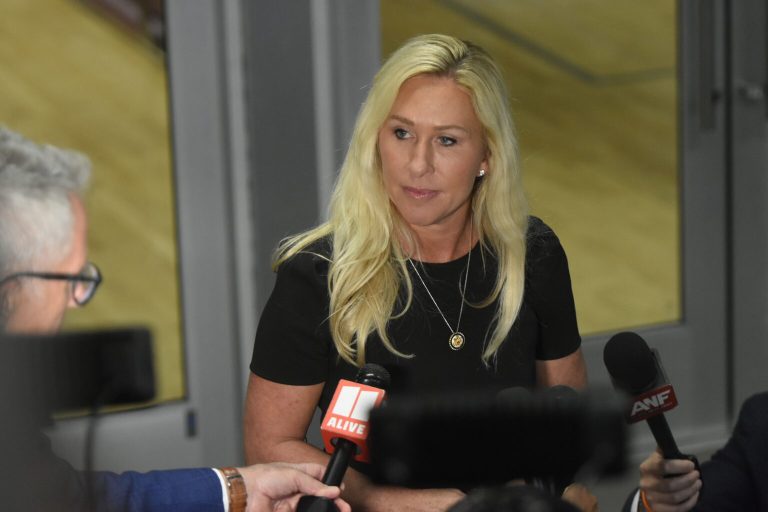A United States lawmaker has found himself at the center of a nationwide controversy after being photographed viewing NSFW images on his tablet during a commercial flight. The incident, which quickly exploded across social media platforms, especially X (formerly Twitter), has drawn widespread attention not only because of the content involved but also because of the unusual explanation the congressman offered in response.
California Representative Brad Sherman, 71, was seen on a flight openly scrolling through images of scantily clad women on his tablet. The photos, captured by another passenger and widely circulated online, immediately triggered a wave of criticism, mockery, and confusion. As the moment went viral, Rep. Sherman moved to defend himself, insisting that the situation was being blown out of proportion and that he was not intentionally seeking inappropriate content.
The controversy only intensified when a senior White House official chimed in publicly. Steven Cheung, the White House communications director, posted the now‐infamous remark: “Bruh. What a total gooner.” The term, widely used online, refers to someone who watches excessive or obsessive amounts of pornography. Cheung’s comment added fuel to the already raging social media firestorm and framed the incident as more than just a fleeting lapse in judgment.
Sherman, however, strongly rejected the accusation. He released a statement pushing back against the White House official’s claim, asserting that he does not have a problem with adult content and suggesting that the images appeared unintentionally. “If I see a picture of a woman, might I look at it longer than a sunset? Yeah,” he told reporters, attempting to frame the situation as harmless while maintaining that the content surfaced unexpectedly.
During an interview with Punchbowl News, Sherman offered a more detailed explanation. He stated that the images originated from the “For You” tab on his X feed, a section known for algorithmically suggesting posts from both followed and unfollowed accounts. “If you have to fly across the country, you look at a lot of stuff on your tablet,” Sherman said, implying that casual browsing during a long flight had unintentionally led him to questionable material.
But for many social media users, his explanation raised more questions than it answered. Notably, the “For You” feed’s algorithm takes into account a variety of factors—interactions, trending posts, popular topics, and sometimes user engagement patterns. While the platform does occasionally show random viral posts, many critics online argued that explicit or borderline content would not appear unless a user had interacted with similar material in the past.
The viral photo posted by the account @dearwhitestaff showed Sherman holding his tablet upright with maximum screen brightness, making the images fully visible to anyone passing by. The caption read: “Why did California Congressman Brad Sherman feel it was appropriate to look at porn on his iPad during a flight today?” The direct wording and unmistakable screenshot ignited countless reactions, jokes, and debates across the platform.
One user commented, “With the screen brightness ALL the way up. Not an ounce of shame.” Others questioned the professionalism and judgment of a sitting U.S. representative showcasing such a lack of discretion in a public, shared space. And some users immediately disputed Sherman’s “algorithm-made-me-do-it” defense, noting that modern platforms typically avoid pushing explicit material without user engagement signals.
While X’s help center clarifies that the “For You” feed curates posts based not only on accounts a user follows but also on posts that are trending, widely interacted with, or personalized through user behavior, several people online pointed out that NSFW images do not usually appear at random. According to X’s own guidelines, explicit content is restricted in most recommendation surfaces, making Sherman’s explanation even more questionable to critics.
However, social media algorithms are complex, and content recommendation systems can occasionally behave unpredictably. Platforms like X often show posts from unfollowed accounts when those posts are widely shared or receive high engagement, which Sherman leaned on as his primary justification. He insisted that he was simply scrolling through content that surfaced naturally and had not sought out anything inappropriate.
Still, many online commenters—and political observers—expressed skepticism. For some, the issue wasn’t just what Sherman saw, but where he saw it. Being a public figure, especially during a crowded flight, comes with heightened visibility and expectations of discretion. Even if the images surfaced unexpectedly, critics argued, closing the app or lowering the screen could have prevented the situation from escalating into a viral embarrassment.
Meanwhile, supporters of Sherman pointed out that the fervor around the incident might reflect broader cultural dynamics of social-media-driven outrage, where even minor missteps become national scandals within hours. Some suggested that the White House communication director’s “gooner” remark was inappropriate given his official role, framing it as unprofessional for a senior government official to mock a member of Congress publicly.
But the viral nature of the post—viewed millions of times within a day—illustrates the reality of political life in 2025: every moment, even private or accidental ones, can become a point of national discussion. And once the image spread online, the conversation grew beyond Sherman himself, touching on themes such as political decorum, digital privacy, public judgment, and the unpredictable power of social media algorithms.
The congressman’s unusual defense did little to quell the online chatter. His remark comparing glancing at attractive women to admiring a sunset drew additional attention, with some seeing it as lighthearted self-deprecation and others viewing it as tone-deaf in the context of the criticism he was facing. The quote circulated widely, further fueling the story and adding to the spectacle surrounding the incident.
As of now, the viral moment remains a hot topic on social platforms, with users continuing to debate whether Sherman’s excuse holds any credibility. While the story is unlikely to have long-term political consequences, it has already secured a place in the year’s growing list of unusual and meme-worthy political moments. Between the accusations, the defensive statements, and the internet’s relentless humor, the situation underscores just how quickly a private moment—intentional or not—can turn into a nationwide headline.
Ultimately, the debate comes down to two competing narratives: Sherman’s insistence that he stumbled upon the images accidentally through algorithmic recommendations, and the public’s suspicion that the appearance of such content suggests a different browsing history altogether. Regardless of which explanation one believes, the episode has sparked broader conversations about privacy, professional conduct, and the implications of being constantly watched in a hyper-connected world.
While Rep. Sherman continues defending himself and pushing back on the “gooner” label, the moment has already reached a level of virality that ensures it will be remembered—and joked about—for quite some time. In today’s digital landscape, a single photo taken at the right angle and at the right moment can spark national attention, whether the target likes it or not.

Emily Johnson is a critically acclaimed essayist and novelist known for her thought-provoking works centered on feminism, women’s rights, and modern relationships. Born and raised in Portland, Oregon, Emily grew up with a deep love of books, often spending her afternoons at her local library. She went on to study literature and gender studies at UCLA, where she became deeply involved in activism and began publishing essays in campus journals. Her debut essay collection, Voices Unbound, struck a chord with readers nationwide for its fearless exploration of gender dynamics, identity, and the challenges faced by women in contemporary society. Emily later transitioned into fiction, writing novels that balance compelling storytelling with social commentary. Her protagonists are often strong, multidimensional women navigating love, ambition, and the struggles of everyday life, making her a favorite among readers who crave authentic, relatable narratives. Critics praise her ability to merge personal intimacy with universal themes. Off the page, Emily is an advocate for women in publishing, leading workshops that encourage young female writers to embrace their voices. She lives in Seattle with her partner and two rescue cats, where she continues to write, teach, and inspire a new generation of storytellers.









